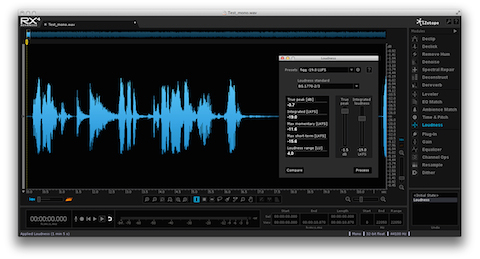Consider the following scenario:
Two copies of an audio file. File 1 is Stereo, Loudness Normalized to -16.0 LUFS. File 2 is Mono, also Loudness Normalized to -16.0 LUFS.
Passing both files through a Loudness Meter confirms equal numerical Program Loudness. However the numbers do not reflect an obvious perceptual difference during playback. In fact the Mono file is perceptually louder than it’s Stereo counterpart.
Why would the channel configuration affect perceptual loudness of these equally measured files?
The Explanation
I’m going to refer to a feature that I came across in a Mackie Mixer User Manual. Mackie makes reference to the “Constant Loudness” principle used in their mixers, specifically when panning Mono channels.
On a mixer, hard-panning a Mono channel left or right results in equal apparent loudness (perceived loudness). It would then make sense to assume that if the channel was panned center, the output level would be hotter due to the combined or “mixed” level of the channel. In order to maintain consistent apparent loudness, Mackie attenuates center panned Mono channels by about 3 dB.
We can now apply this concept to the DAW …
A Mono file played back through two speakers (channels) in a DAW would be the same as passing audio through a Mono analog mixer channel panned center. In this scenario, the analog mixer (that adheres to the Constant Loudness principle) would attenuate the output by 3dB.
In order to maintain equal perception between Loudness Normalized Stereo and Mono files targeting -16.0 LUFS, we can simulate the Constant Loudness principle in the DAW by attenuating Mono files by 3 LU. This compensation would shift the targeted Program Loudness for Mono files to -19.0 LUFS.
To summarize, if you plan to Loudness Normalize to the recommend targets for internet/mobile, and Podcast distribution … Stereo files should target -16.0 LUFS Program Loudness and Mono files should target -19.0 LUFS Program Loudness.
Note that In my discussions with leading experts in the space, it has come to my attention that this approach may not be sustainable. Many pros feel it is the responsibility of the playback device and/or delivery system to apply the necessary compensation. If this support is implemented, the perceived loudness of -16.0 LUFS Mono will be equal to -16.0 LUFS Stereo. There would be no need to apply manual compensation.
-paul.

Good description, particularly about the stereo pan law from mixing desks and DAWs, although I can’t see your average playback device (phone or MP3 player) applying a 3dB attenuation to mono files for a very long time to come.
Thanks Richard.
I’ve heard that the mono vs. stereo measurement, perception, and playback issue is a hot topic over at the EBU. We’ll see how it all pans out.
-paul.
That’s interesting, good to hear that they’re considering it as a real issue.
Because of this, shouldn’t we also hard limit 3 dB lower for mono than for stereo?
No Daniel.
Remember Integrated (Program) Loudness is all about perception. Peak Ceiling on the other hand has no bearing on perception. It’s simply a representation of amplitude measured on a linear scale.
For example it’s entirely possible for two clips of audio with different Peak Ceilings to be perceptually equal.
Bottom line is the recommended Peak Ceiling is the same for both mono and stereo files.
-paul.
Also, Clipping occurs at 0dBFS, regardless. The channel makeup of the file (Stereo vs. Mono) doesn’t change that …
-paul.
So if, for example, a dBTP is -0.1 in mono, the playback still wouldn’t clip after pan law?
In theory, yes. But I think you know that at that Peak Ceiling (-0.1dB) you’re cutting it close. In other words, there’s just about zero headroom for possible deviations that may occur. Point is with your DAW set up properly, and working with sufficient headroom – you should see little or no change in the Peak Ceiling.
Have a look at these specs. Same file. One stereo, one mono.
http://f-video.s3.amazonaws.com/file-specs.png
-paul.